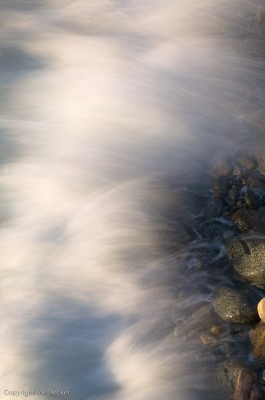The Tuesday Composition: Composing Images with Water

If you like this article, you can now get the book! Joe has expanded the “Tuesday Composition” series into an inspiring new ebook on composition, especially for nature photography. Check it out: The Tuesday Composition.
Like mist and fog, water is a subject that deserves it’s own consideration compositionally. With the exception of very still lakes and ponds, one of the things that makes water “look like water” to us is the way that it moves. We can’t present this movement in a still image to a viewer directly. Instead, we have to translate it into a still image by making an exposure; and we use a variety of controls such as shutter speed and composition to help communicate a sense of that motion.
When we want to capture a sense of movement in water there are several things to keep in mind. Shutter speed has a significant effect-a waterfall, cascade or even surf against a coastline will have a very soft, gentle feel if we use a long exposure. Faster exposures will stop individual droplets in air, creating a greater sense of energy. Shutter speed isn’t the only thing to keep an eye on, though. The way we compose the path of water through a scene can also affect how viewers experience water moving through a scene. Where possible, try and make it easy for the viewer’s eye to trace along the lines of the water’s path. Your images will (all other things being equal) be more effective if the visual flow of the water isn’t interrupted by things that block the view of the water. Diagonals and S-curves can also create an additional sense of motion. (more…)
